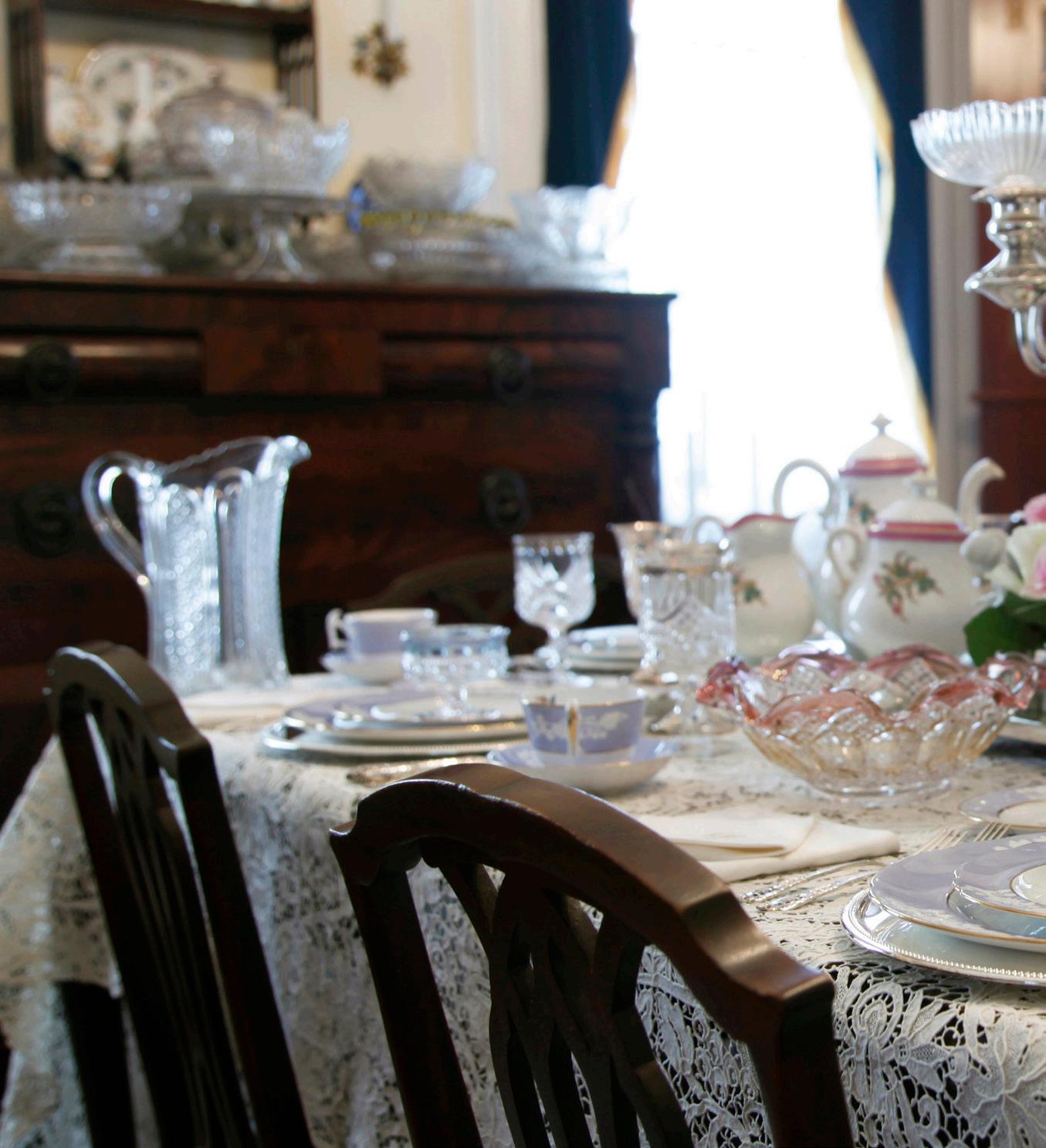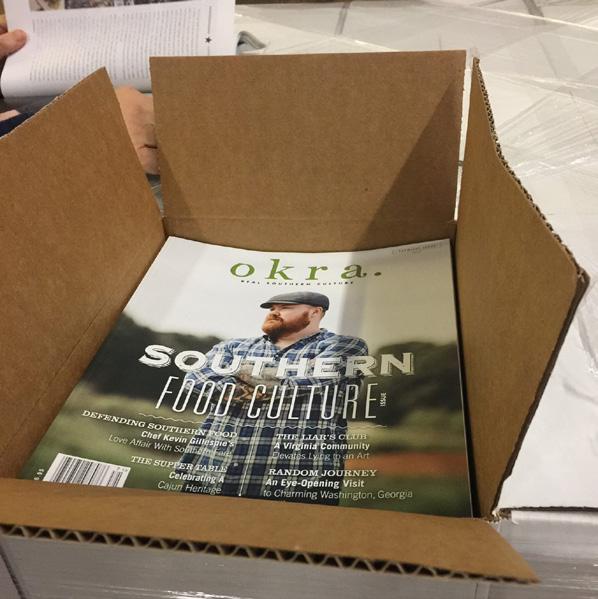
16 minute read
STONES TO GRIND
A NATURE-LOVING CHEMIST TURNS A LOVE OF NATURE INTO A PASSION FOR PAINTING
Written by Lisa Tomey / Photography by Madison Woods
Advertisement
Gently applying her own handmade natural paints to a painting, Madison Woods muses on her creative path. “I have a deep love for nature and a great desire to capture it in drawings and photography.” It has been a wonderful journey from the inspiration to the end results of making watercolor Paleo Paints to beautiful artwork. While her own mother painted duck decoys, carved by her husband, Woods did not start creating art–other than sketching–until just a few years ago. Self-taught, she began honing her drawing skills, using her own photography for inspiration. It wasn’t long before she brought in her skills with chemistry. Woods is a practicing chemist and worked in the field of inorganic and organic chemistry, later moving to environmental chemistry. She left the chemistry lab back in 2013 and began the journey to what would become Wild Ozark. It started with growing wild-simulated ginseng and creating crafts items from wild botanicals found nearby. With that success, she began experimenting with other mediums and by 2018, she was creating her own paints and using them to paint nature inspired watercolor art. From the very start, Woods created her watercolors from local pigments, developed in her kitchen lab, Wild Ozark Paleo Paints became her obsession. Sourcing this paint is as close as her own back yard, located in the beautiful Arkansas Ozarks at the country home she shares with her husband, near Kingston. With the abundance of nature finds from her daily walks on trails and by creeks, Woods found it easy to get started. Driven by the desire to discover all possible colors, she is ever on watch for new inspiration. Each of her two collections, Soul of the Ozarks and Blood of the Ozarks are made from local pigments. The latter contains shades of the color red from stone sourced in the nearby King’s River. “Whenever I travel, I collect rocks or old bricks for pigments. I have sand from Doha, Qatar. People also send me rocks. I have a few from the Ouachita Mountains here in Arkansas.” Woods has also used rocks from Seattle, Oklahoma, and North Carolina. Plus, she says she has enough from Central Texas to start another collection. It is her vision to have collections representing as many places as possible. “My favorite spot to gather is in the creek here at Wild Ozark where the floodwaters wash up a new gravel bed every time it rains, good and hard.” Finding bleached white bones, charring them in the wood stove, makes the “most incredible black” (bone black). Using what nature provides even has benefits in the form of a recent clay-laden landslide, taking the negatives and turning it into positives. Processing each color is a time intensive effort. Starting with the raw form, such as stones, these are first ground by hand. The ground up pigment is washed then allowed to “settle” before the clarified water can be poured off. Next, the resulting pigments must dry, which can take several days. Next comes the grinding of the dried pigment and mulling into gum Arabic medium. This will then be formed into a cube, which shrinks as it dries. During the drying process, more paint will be added as needed to create a full cube or pan. The intensive process can take up to two weeks to complete. Earth pigments sourced from rocks, bone, or clay are permanent and lightfast, and do not have to be tested, however plant sourced pigments require testing for lightfastness. Swatches are made, cut in half, one going into the swatch book (away from UV light) and one being taped on the outside window to get full sun exposure for four weeks. Woods then compares the two halves
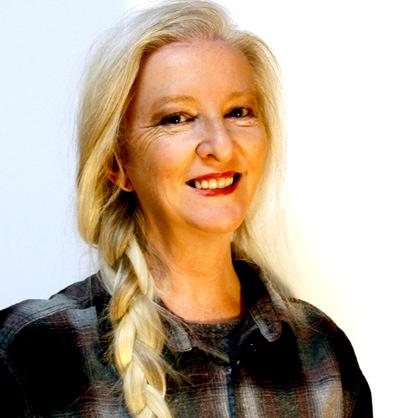
to determine if the outside swatch faded, mildewed, or oxidized. Two plant pigments she commonly uses intensify in the light, rather than fading. Once the paints are complete, Woods can start painting. Woods maintains a catalog of the pigments with special notes on the pigments sourced from her immediate area. This involves keeping samples of materials used, a bit of the ground pigment, a sample of the paint itself, and swatches of both the rub from dried pigment and the finished paints. Commissioned work has included a portrait of a brown pelican and a Brahman calf, and more. Recent projects are “Ozark Birds of Prey” and “The Elemental-Nature Fantasy.” Woods finds that birds are tedious, time-consuming paintings so she explores painting with new techniques, still using the limited palette of local pigments. Her art graces walls internationally, 11 states, 2 countries and counting. Making paints is a tedious process but a “labor of love.” Much of her focus is on creating art and discovering new ways to present her prints. Investing in a high-quality printer and creating giclee on 100% cotton rag paper has made a huge difference in the ability to expand her options for reproducing her pieces. While many artists offer tours of their studios, Woods laughs, “Noooooo, lol. I work in my house currently. It looks like a mad scientist lives here.” She does sometimes offer workshops to those wanting to know this craft from ground to finished paint. These folks do “get a glimpse of the mayhem that is my home office/studio/lab.” Most people prefer to start with her ready-made paints, available on her website. Wood is an active member of the art community in Kingston. Her art is on display for sale in the local art gallery on the town square in Kingston. Beyond her painting, Woods is a published author with several books on the topics of ginseng, herbs, nature, musings, and even flash fiction. You might even discover that she writes “Rural Fantasy” under the pen name of Ima Erthwitch. She is also an ambassador for the Kingston area where she lives. Woods works can be found displayed in local and national art shows. She offers stationery, artwork, paints, photographs, and more on her website @
wildozark.com
Clockwise from upper left, 1: Woods laying in some sketching detail as she works on a painting of a bird. 2: Scratching a rock gives an indication of the colors the ground stone would produce. 3: Woods finds birds to be the most tedious to paint. This painting of “On the Cusp” showcaes many brown tones of her pigments. 4: Cubes of finished paints and the colors they produce are labeled on paper to test their lightfastness. 5: The creek near her home is a favorite place for Woods to forage for stone and other items to produce her pigment.
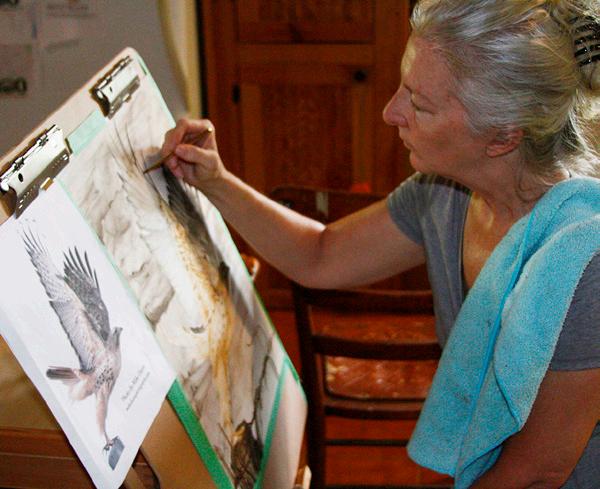
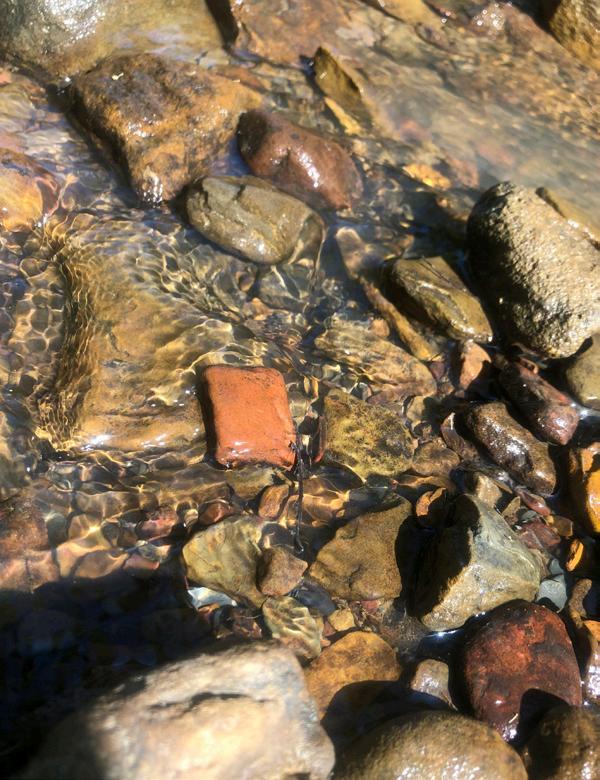
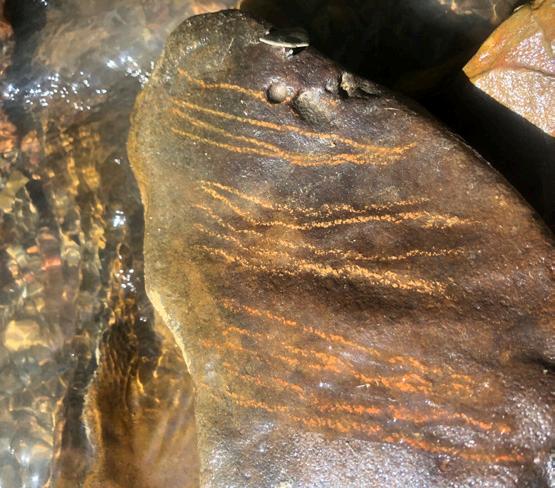
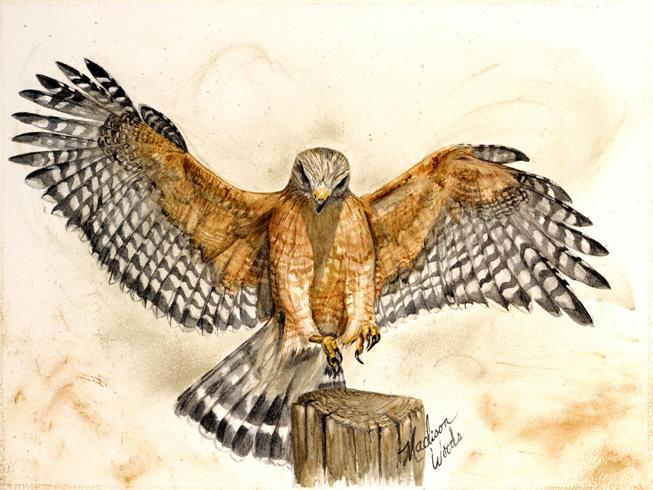
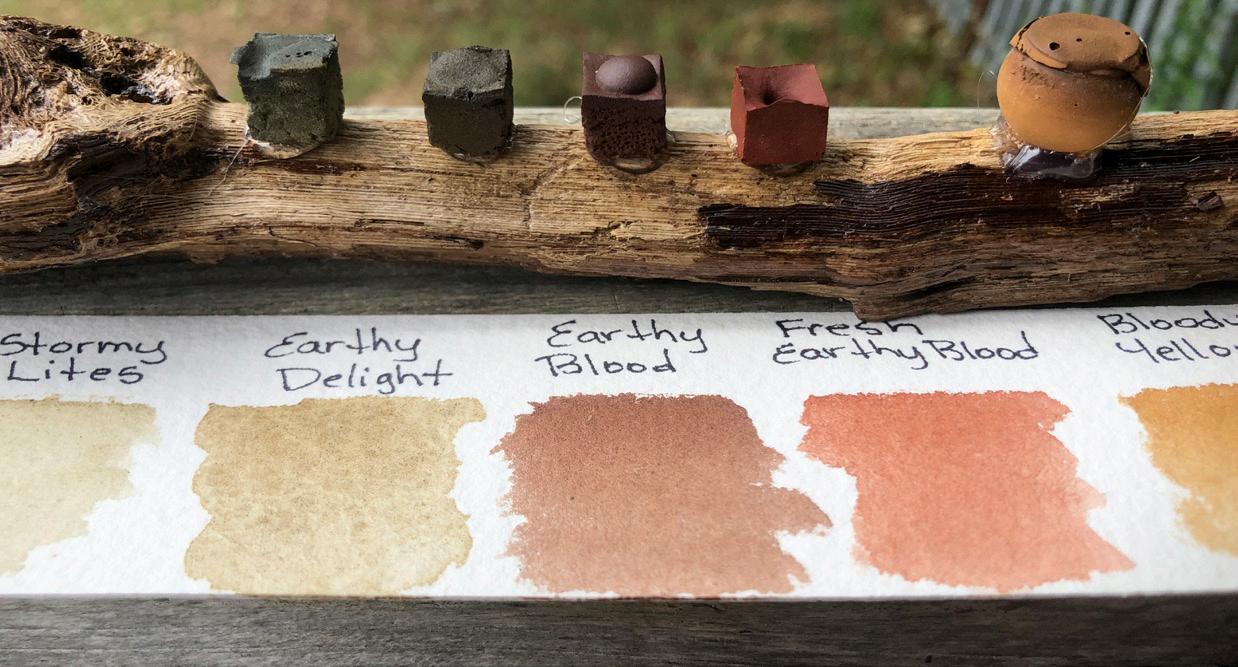
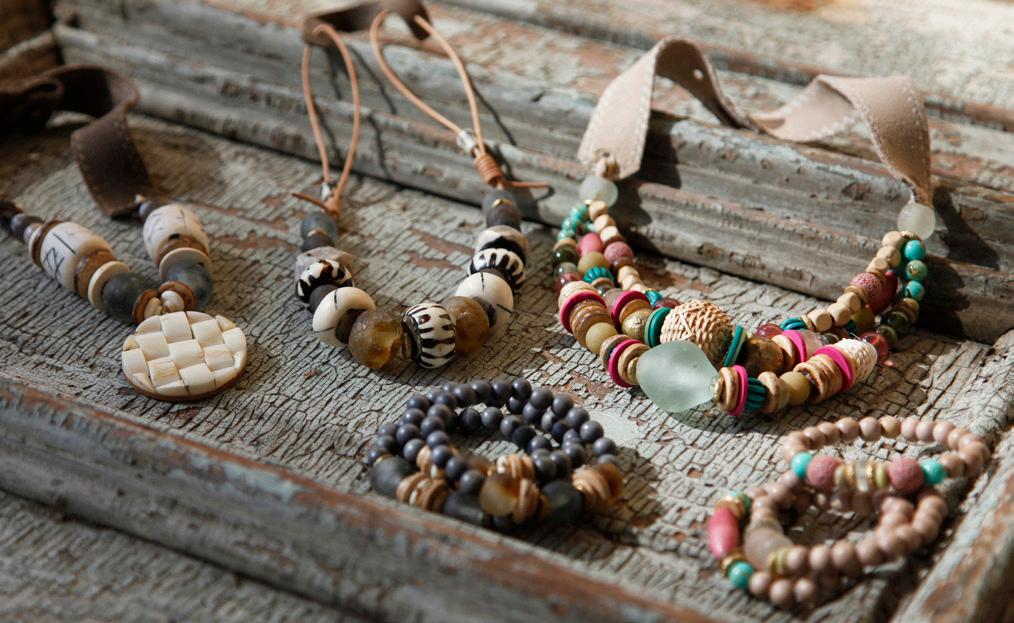
STYLE TWINE & TWIG
Begun in 2013 almost on a fluke, sisters Elizabeth White and Jac- messy paintings…you name it,” says Tugwell. “Then we source our quelyn Tugwell didn’t actually have any intention of starting a com- beads from near and far. The fun part comes next: Piles of beads and pany when they created their first pieces for Twine & Twig. “We were tons of mess. We string, unstring, try again, finish each other’s…and just designing original jewelry for ourselves, and friends then we have a necklace. Once we feel like it’s a go, we started to ask for pieces; so we had a launch party,” have the girls in our studio begin to duplicate.” explains Tugwell, who, in addition to designing jewelry While they may be placing their travel plans on hold for and running Twine & Twig, is a talented hairstylist with a while, the sisters can still take satisfaction in the fact a background in studio art and education. “From there, that their creations are out in the world. “Our pieces are we had tremendous luck, and everything grew very fast; perfect for everyone,” says White. “When we started, we almost too fast for us to keep up. We have learned a lot designed for ourselves, our age, and our style. It has along the way.” been so rewarding to see the collection on people of all Those pieces, among them bracelets and necklaces as ages, ethnicities, sizes, and styles. We have seen our well as pendants, have a decidedly tribal flair, mixed pieces incorporated with the preppiest of looks down with a coastal influence that gives them a unique ap- to the most hippie, granola style and everything in bepeal. “We’re extremely inspired by our travels and our children,” explains White, whose background in graphic Jacquelyn Tugwell & Elizabeth White tween.” Regardless of what they’re making, at the heart of the design and product development bring a valuable skillset company is just that: Heart. “We have an entire Charity to the company. The mother of three children, White is Collection, and we prioritize incorporating philanthropy also an intrepid traveler, having hiked Table Mountain in Cape Town, into the core values and culture of our brand,” says Tugwell. “Our South Africa. “We are so fortunate in North Carolina to have the beach hope is that these pieces will be a conversation starter about different and the mountains, and we are constantly at both and absorb so much philanthropy objectives as well as becoming a symbol to remember inspiration.” your good deed. To date, Twine & Twig has donated over $50,000 to a It is, perhaps, the creativity and the sense of story that makes their variety of charities and organizations.” pieces so special. “We usually start with the colorway, and we find All collections can be found online @ twineandtwigstyle.com. inspiration for a new collection from waves, trees, concerts, our kids’ Written by Liesel Schmidt
Photo: Nicole McConville
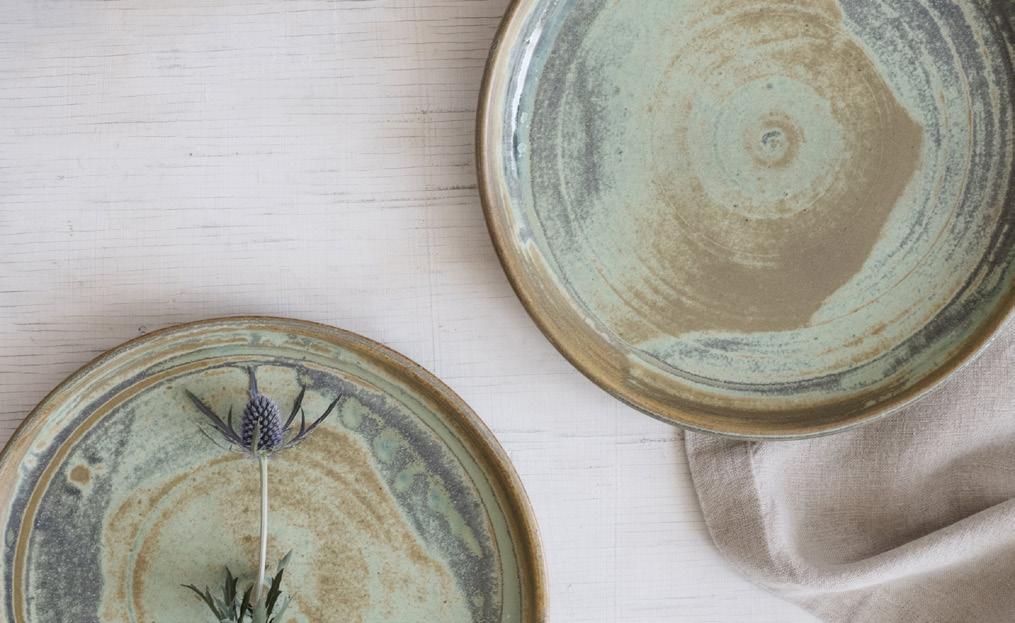
HOME KEYES POTTERY
There’s a satisfaction that comes from taking a lump of clay and trans- elevate each meal, making it a more pleasurable experience,” Keyes forming it into something beautiful, feeling the cool, wet shapeless- asserts. “Knowing that a lot of time and care went into making the ness take form under your hands. For pottery artist Laura Keyes, it is mug that you’re drinking your morning coffee out of makes that daily that tactile aspect that so draws her to her craft, making ritual more meaningful. Personally, I love the connection unique pieces whose purpose is to be used “as everyday between the maker and the user; and knowing that each wares while maintaining an elegant aesthetic.” piece I make will be used and enjoyed in someone’s day It was during a visit to see her sister at college when to day life gives me a lot of joy.” Keyes was young that she was first introduced to the A resident of Marshall, North Carolina, Keyes lives with world of pottery, and she recalls being entranced. The her husband and assorted animals: a dog, a cat, and five rows of wheels, the smell of the wet clay, the magic of ducks. Living in a mountain community, she is surroundmaking something from nothing. ed by nature that inspires her work. “I have a lovely view Not until 2013, however, did Keyes rediscover her inter- from my studio, and watching the clouds and mist rising est in pottery, igniting it into a passion while she worked out of the mountains is a daily meditation to me. I spend as a studio assistant at Magnum Pottery in Weaverville, a lot of time in the woods, and the vibrancy and patterns North Carolina. After five years of working and studying of the lichen (which one of my glazes is named for), the with them, she launched Keyes Pottery in 2018. “I am constantly inspired by the fascinating alchemy of Laura Keyes wildflowers, and mushrooms is a constant wellspring of inspiration,” she says. working with clay and seeing the transformation it goes Working with glazes whose colors are inspired by the through,” says Keyes of what makes her so passionate about her work. hues she sees in nature, Keyes creates a wide variety of home goods “It’s a meditative process for me, one that I thoroughly enjoy.” and kitchen ware. “Whether you are a fan of neutral tones or bold, Whether thrown on the wheel or built using slabs of clay, each piece graphic patterns, my collections will compliment your personal style is handcrafted by Keyes, designed with the intent of being functional, and décor,” says Keyes. lightweight, and sturdy enough for daily usage. Clearly, she wants her Her pieces are available online at keyespottery.com and by appointment work to be well-loved and well-used, not just placed on a shelf and from her studio in Marshall, NC. admired from afar. “Having handmade dishes in your home can really Written by Liesel Schmidt
Photography by Heidi Harris
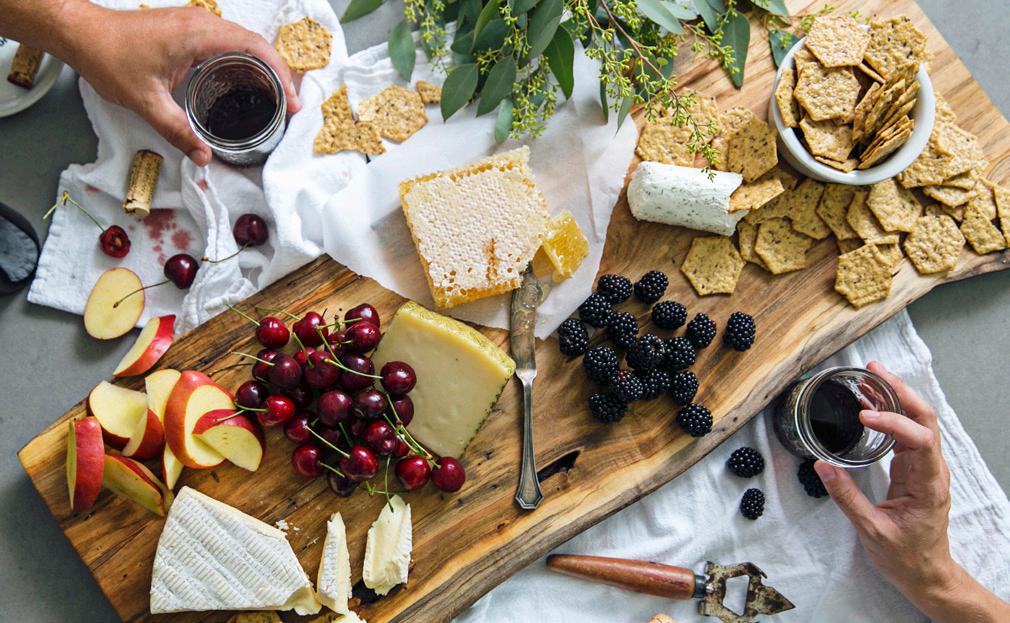
HOME WOODKITH
Webster’s dictionary defines the word kith as “familiar friends, neigh- in the piece reveals the storied history of the tree and its tale.” bors, or relatives.” Fittingly, that is the very heart and soul of Wood- Inspired by the movement and the inherent features of the wood they Kith; and since its founding in 2015, the products bearing its brand are working with, WoodKith pieces are a labor of love and a celebrahave united two of the South’s most valued treasures: tion of nature. And while most woodcraft uses trees harfriendship and wood. “We design lasting pieces that are vested and milled specifically for that purpose, the Atmade more beautiful by the company had and the times lanta-based company sources urban lumber that would spent around them,” says Wayne Bedenbender, who co- otherwise be considered waste. “We use as much of the owns WoodKith with Shane Schoenith. trees we rescue as possible, making Feast Boards; furRaised in a family of carpenters, Bedenbender worked niture; and small items such as coasters, recipe card with wood as a child and harbored a passion for the craft holders, and candle holders all with a live edge,” says that grew as time went on. It wasn’t until 2015, howev- Bedenbender. “The lumber is natural—we simply cut, er, that he realized that woodworking could be his true sand, and oil it.” calling. “We came upon a huge old pecan tree at a con- Naturally, part of the appeal—apart from the beauty of struction site that was cleared away, and we rescued the the wood, is the craftsmanship and the fact that each tree and had it sawed into live edge boards,” explains piece is made completely by hand. “Handmade work alBedenbender, who is the company artisan, while Schoe- Wayne Bedenbender lows for perfectly imperfect craftmanship,” Bedenbendnith handles the business side. “One tree led to another, er contends. “Mass produced has too much sameness, and a business was born.” but each piece we make is unique and different. You Settling on the name WoodKith as a nod to the phrase “kith and kin,” can lay ten Feast Boards side by side, and you would be hard-pressed Bedenbender and Schoenith wanted their creations to be “pieces to to find two that were the same.” gather around.” And so they are, from their large Feast Boards—a Of all their products, the Feast Boards are WoodKith’s most popular name they trademarked for their specialty charcuterie boards—to their pieces—and with good reason. “They’re perfect for anyone that loves beautiful live edge furniture. Like the trees they are harvested from, to entertain. It’s the ‘wow factor’ of having a natural, live edge board each piece is completely unique. “We believe each piece of wood has for serving charcuterie,” Bedenbender says. Look for WoodKith naa story to tell,” says Bedenbender. “Each ring, grain, crotch, and fork tionwide at select retailers and online @ WoodKith.com. LS
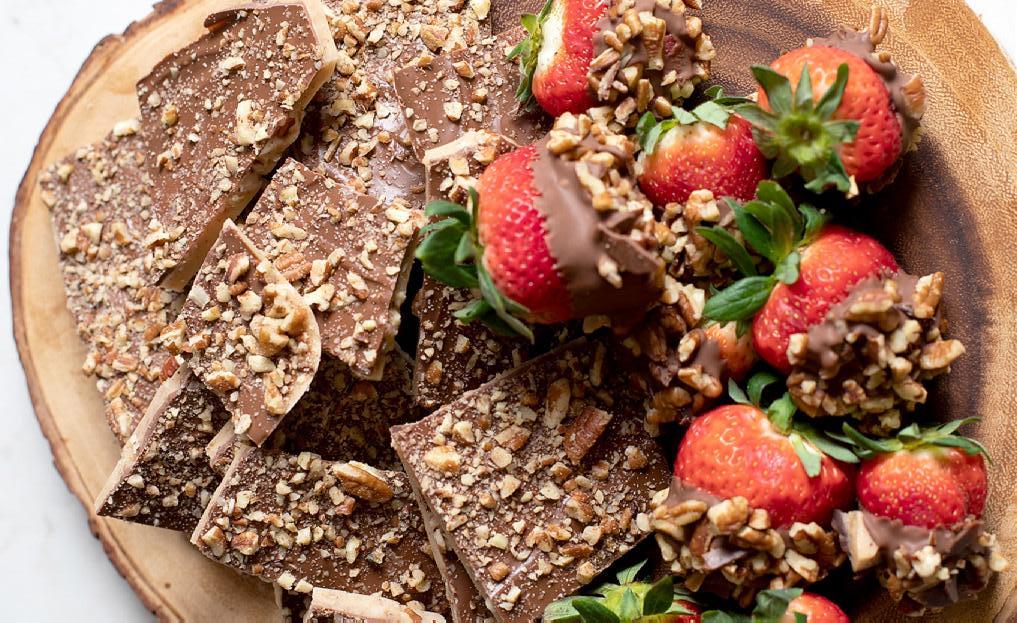
FOOD BLUFF CITY TOFFEE
In a day and age when candy is mass-produced and created by ma- that is rich and creamy. It’s the texture of the product. It’s the perfect chines, it’s special to find a handmade confection—especially one balance of crunch and smoothness that can only be found when it’s with history. It was that sense of specialness that inspired Stephanie created in small batches.” Upshaw to launch Bluff City Toffee in 2016, building If your mouth is watering at the thought, it’s with good on a recipe that she had been making for decades. “It’s reason, as all of Bluff City’s sweets are indeed drool-woralways been a staple in our household and social circles, thy. Dark or milk chocolate covered pecan toffees, white so it just felt natural to introduce it to the public once chocolate macadamia toffee, toffee covered popcorn… my kids left the nest and I had a little extra time on my All of Upshaw’s recipes utilize the finest ingredients and hands,” says Upshaw. follow a process that is sweet in its simplicity. “That Using that “extra time,” the Tennessee native took steps simple process is, to me, what makes it so good!” she to create a fully-fledged business that would far outpace says with a laugh. “I make each toffee variety by hand in the small batches she was used to making. After reserv- small batches, using just a few simple, natural ingrediing a spot in a commercial kitchen that offered access ents. Think butter, sugar, nuts, and chocolate, as well as to top-of-the-line equipment, she worked with food sci- sea salt for one flavor.” Containing no added preservaentists to understand such things as nutrition panels and tives and 100% gluten-free, the toffees are the perfect shelf life, learning the ins and outs of product creation. Stephanie Upshaw treat for those with dietary restrictions. “After that, it was off to the races with local retailers Being Memphis-based, Upshaw is deeply inspired by her and online sales!” Upshaw recalls. Five years later, her city. “There’s no doubt that Memphis is a food city,” she toffees are on the shelf in numerous local shops in the Memphis area. says. “It’s also a place that rallies around its local makers. Everyone She also unveiled her very own storefront/fulfillment center in Novem- here wants to support their neighbors, their friends, and even friends ber 2020. of their friends. It really is amazing how supportive Memphians are Success is made even sweeter for Upshaw with the knowledge that all for locally owned small businesses like mine. They make me want to of it has come from the work of her hands. “I may be biased, but I am do all I can to give them a sweet treat made in their own backyard for a firm believer that small-batch treats taste much better than those years to come.” Bluff City Toffee products can be purchased online @ that are mass-produced,” she contends. “It’s the velvety chocolate bluffcitytoffee.com and in retail stores in Memphis. LS


